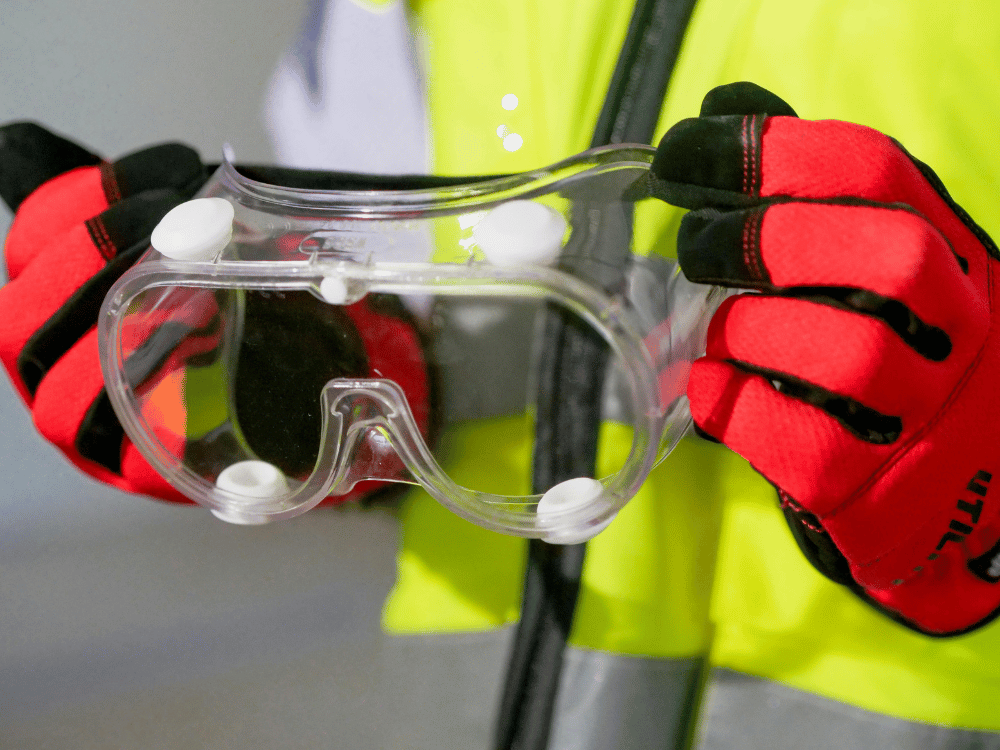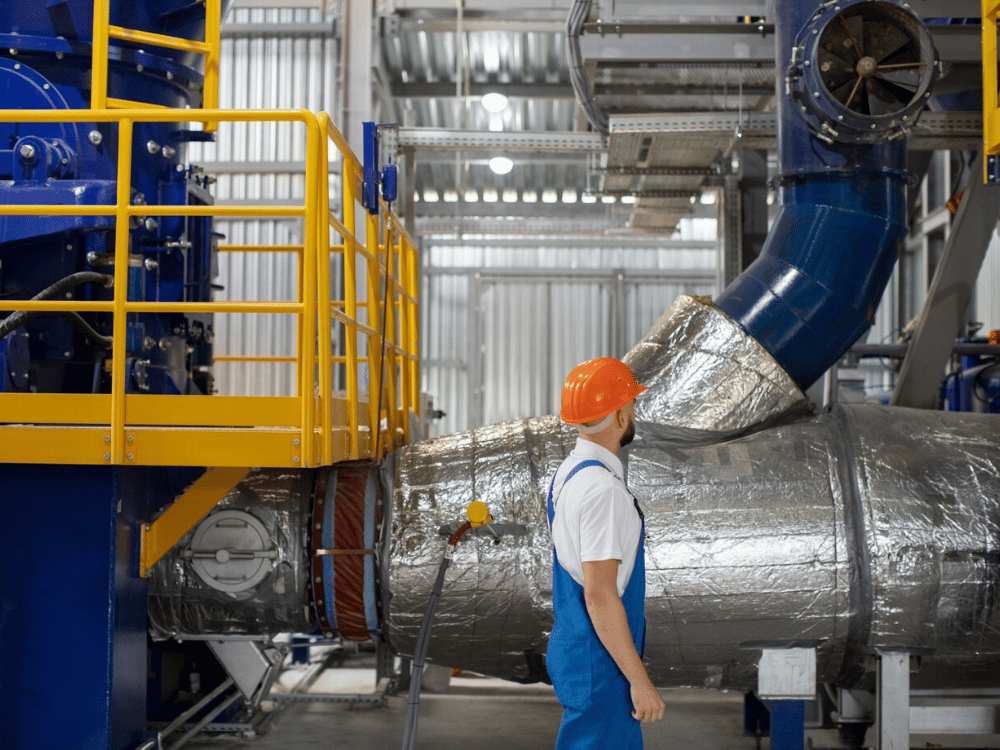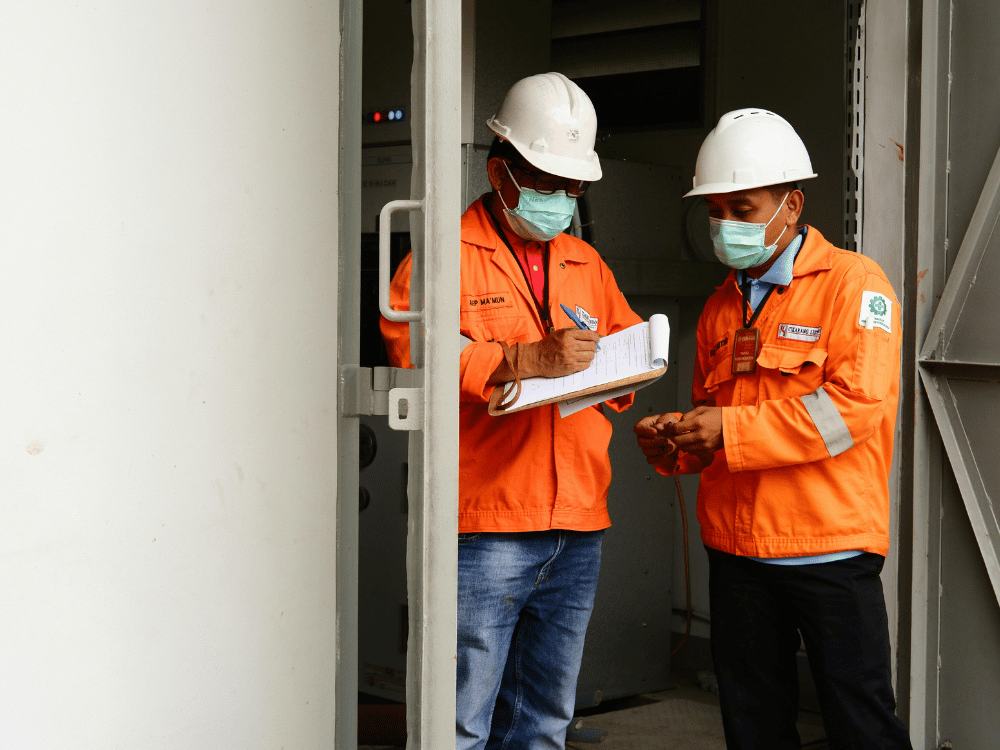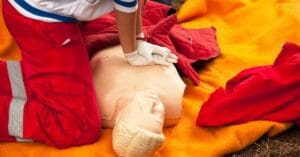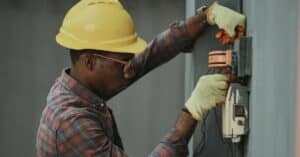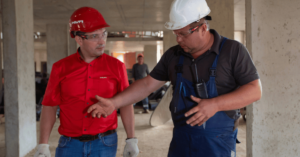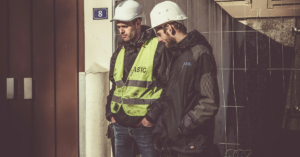Did you know that businesses with an annual turnover of up to £50 million could be ordered to pay up to £4 million in fines for health and safety breaches?
Likewise, smaller organisations (turning over up to £10 million) could be fined up to £1.6 million.
These financial sanctions get larger as your business grows, which shows just how important it is to stay up to date with the latest occupational safety and health (OSH) standards.
A health and safety audit is the perfect practice for ensuring you stay completely across your requirements at all times. Not to mention helping you avoid any costly incidents.
But what is a health and safety audit? How often do you need to complete them? Who carries them out, and how can passing a NEBOSH National General Certificate with TSW Training give your team the necessary skills to complete the checks in-house?
What is a Health and Safety Audit?
The Health and Safety Executive (HSE) defines a safety audit as:
“The structured process of collecting independent information on the efficiency, effectiveness and reliability of the total health and safety management system and drawing up plans for corrective action.”
There is no legal requirement for businesses to complete health and safety audits. However, Section 2 of the Health and Safety at Work Act 1974 (HASWA) highlights that it’s the employer’s duty to (so far as is reasonably practicable) ensure the health, safety and welfare of all employees.
The above legislation includes the requirement for employers to safeguard the maintenance of tooling and working environments.
Health and safety audits are crucial for managing these areas.
What’s the Difference Between an Audit and Inspection?
Many believe that “safety audits” and “safety inspections” are terms that can be used interchangeably for the same checks.
However, these two separate active reviews can work together to ensure a safe workplace.
Audits are in-depth reviews of how safety-conscious your business is. These checks should overview every area of the company to address potential incidents at their root cause.
Whereas an inspection is more akin to a health and safety risk assessment in as much as it helps confirm that the safe working procedures outlined in your audits are continuously followed.
Health and Safety Audit Example
A robust health and safety audit should comprise several areas and checks, these include:
- An initial overview of current procedural and environmental OSH compliance
- Complete review of health and safety policies
- Discussions with employees to determine their understanding of regulations and safe working practices
- Overview of previous incidents to define any patterns or common issues
- Highlight any potential hazards or risks.
5 Benefits of Conducting a Health and Safety Audit
Conducting regular health and safety audits allows your company to reap the rewards from a few attached benefits, including:
- Improved Safety: By highlighting and implementing control measures, health and safety audits can help reduce accidents and injuries in your workplace.
- Compliance: Non-compliance with HASWA regulations could not only spark an increase in incidents on your premises, but it can also leave you open to damaging punitive actions.
- Cost Savings: The cost of putting your team through health and safety training to identify and prevent hazards is minuscule compared to some financial penalties we outlined earlier. For example, a waste management company was fined more than £3 million when health and safety failings at their West Midlands site resulted in the passing of two employees in 2023.
- Enhanced safety culture: Showcasing a commitment to employee safety through regular audits helps foster a positive health and safety culture in your business.
- Improve company reputation: Company culture and a commitment to safety will also help develop a strong reputation for your business in the wider industry. Reputable brands attract better staff and represent a more engaging prospect for would-be investors.
Types of Health and Safety Audits
Because health and safety audits cover so many areas of business operations, it’s correct that there are different types and extents of checks.
Firstly, you could opt to have internal or external checks. A competent employee must complete internal checks. Competent personnel can be classified as those who have studied and passed the NEBOSH National General Certificate.
Alternatively, some brands opt for external reviews. These come at an additional cost and involve a certified third-party health and safety auditor coming on-site to complete independent reviews.
In addition to internal and external overviews, there are also different types of specialist audits to consider.
The four main types of health and safety audits are:
- Process Safety Audits: Focused on honing procedural safety, these checks concentrate on assessing the safety and reliability of work processes and systems.
- Behavioural Safety Audits: These checks focus more on employee knowledge and practices. A behavioural audit defines how safely staff members operate in a day-to-day setting.
- Management Safety Audit: Aims to review the whole safety system, companywide. From employees to Line Managers and beyond. Does your sitewide approach align with company policy and industry regulations?
- OSHA Compliance: This check highlights how closely your workplace aligns with the HASWA regulations.
Why is it Important to Conduct These Audits?
Health and safety auditing via the four subsections mentioned above is incredibly important for various reasons.
Not only does it ensure that your workplace is safe for all employees and visitors, but the checks also mean you’re less likely to be at risk of litigious circumstances in the event of an incident.
In addition, health and safety audits throw up unique professional development opportunities for all.
You and your management team can take them as a chance to keep your OSH knowledge up to date. Plus, behavioural audits can also highlight knowledge gaps within your team.
Apart from personnel development, regular audits also offer another opportunity to stay across the condition of your workplace. Are your systems, tools, processes, and equipment still fit for purpose? If not, how could they be improved?
Last but not least, by leveraging audits to stay compliant with HASWA regulations, you can keep your team safe from serious injury or worse. According to HSE stats, 135 UK workers passed away as a result of work-related accidents last year.
How Often Should a Health and Safety Audit Be Conducted?
Carrying out health and safety audits on your premises should be an annual task – at a bare minimum.
However, depending on your industry type, work environment and company size, you might want to increase that scheduling to once every six months or even once a quarter.
For example, annual safety checks may be acceptable in low-risk atmospheres like offices. However, completing quarterly checks might be more compliant in locations like laboratories, quarries, construction sites or busy manufacturing plants.
To further emphasise that point, of the 135 work-related fatalities we highlighted earlier, over 33% occurred in the construction industry, while more than 10% came in manufacturing settings.
Who is Qualified to Perform a Health and Safety Audit?
As we mentioned earlier, external checks will be completed by specialist health and safety auditors. However, you can remain HASWA compliant by completing internal checks, too.
For your internal audits to pass muster, the HSE requires they be carried out by competent and trained personnel.
Understanding how to take and pass the NEBOSH National General Certificate open book exams is crucial to becoming competent. Passing this qualification showcases that you know how to detect and prevent hazards from occurring – among other health and safety legalities.
How Can Organizations Prepare for a Health and Safety Audit?
Creating a positive health and safety culture by prioritising safe working practices and implementing regular reviews is the perfect way to prepare for an audit.
To help create that culture in time, consider brushing up on your regulatory knowledge and introducing several best practices.
- Complete regular safety checks: Running regular area-specific audits helps ensure each business sector remains compliant. This approach also minimises the opportunity for operational ambiguity to creep in. Everyone knows the safe working practices. They maintain and take ownership of them and train new staff to those standards.
- Enhance employee training: Health and safety auditors will be looking to ascertain whether employees receive adequate OSH training. Make sure your staff are entirely up to speed by placing them on NEBOSH National General Certificate training with TSW today.
- Maintain accurate records: Ensure any findings from your regular safety check are well documented and easily accessible. Any business with more than 10 employees should also have an Accident Book with incidents or near misses recorded.
- Emergency preparedness: Auditors understand that accidents still happen. With that in mind, they will want to see evidence that your business has robust emergency preparedness plans in place. These should be implemented in case of a fire or hazardous substance leakage.
- Equipment audits: Preparing for an internal or external health and safety audit should include tooling. In environments where machinery is used on a day-to-day basis, you should consider whether the equipment is working as it should and ensure that all safety measures are in order.
- Personal Protective Equipment (PPE): Similar to the above, higher-risk sites should check the levels and condition of available PPE (Personal Protective Equipment) before a safety audit.
Health and Safety Audit Checklist – Key Aspects
Ensuring the individual components and steps of your health and safety audit are correct is a great way to guarantee a robust review.
We’ll go over each element in more detail next. But for now, your checks should cover these core bases:
- Documentation
- Compliance
- Personnel interviews
- Incident reviews
- Site walk
- Recommendations
How to Conduct a Health and Safety Audit
As we just alluded to, health and safety auditing comprises many different elements. However, the process must be robust to ensure each area of your business is compliant.
That being said, here are the core steps in most audits:
1. Gather Documents
Bring together all details of health and safety literature and logs like accident books, policies, procedural documentation, confirmation of roles and responsibilities, and details of previous audits.
2. Research and Evidence
Survey staff and review any machinery (as well as the documents highlighted above) for compliance. This stage should also include a site walk to overview tidiness and procedural safety.
3. Review Audit Results
Highlight any hazards, risks, areas for improvement, outdated documentation or literature, and staff training opportunities.
4. Highlight Recommendations
Review all areas of the business and highlight recommendations for improvements in every area where shortcomings have been identified. Schedule follow-up reviews to track improvement progression.
5. Prioritise Corrective Work
Define any areas where urgent improvements are required to enhance compliance and avoid risk.
6. Review Results
Make findings from the audit available to the employer and management team.
Common Issues Identified Health and Safety Audits
Many common health and safety issues at work could be highlighted earlier through a robust health and safety audit. Some of the most common issues picked up in these checks include:
- Trips and falls: Walking or working surfaces are a common area of investigation for safety auditors. Insufficient fall protections are a common occurrence. Considering that almost 30% of the fatal accidents at work in 2023 came from a fall, this is an important issue.
- Fire prevention: Failure to provide evidence of regular maintenance of fire detection systems is the next most common issue. In addition, brands are also regularly picked up for having inadequate fire strategy plans.
- Equipment maintenance: Another common issue for health and safety auditors is the condition and operation of tooling. Issues around inadequate guards, PPE, grounding and retainers all pop up regularly in manufacturing and construction sites.
- Hazardous substances: The existence, condition, and control of asbestos and other hazardous substances is a common health and safety issue. Plus, compliance with COSHH regulations when storing hazardous chemicals occurs often.
Can Health and Safety Audits Be Conducted Remotely?
No. Because robust health and safety audits require a competent person or expert consultant to conduct a site walk and witness regular operations, these crucial checks should be completed in person.
Conclusion
Regular health and safety audits are crucial in ensuring your workplace remains safe and compliant with OSH regulations.
Many brands choose to leverage external consultants to complete these vital checks.
However, with our health and safety training, you have the option to develop your personnel and complete your audits internally with the help of homegrown experts.
Complete your NEBOSH National General Certificate training with TSW now and take charge of your safety standards and professional development.



